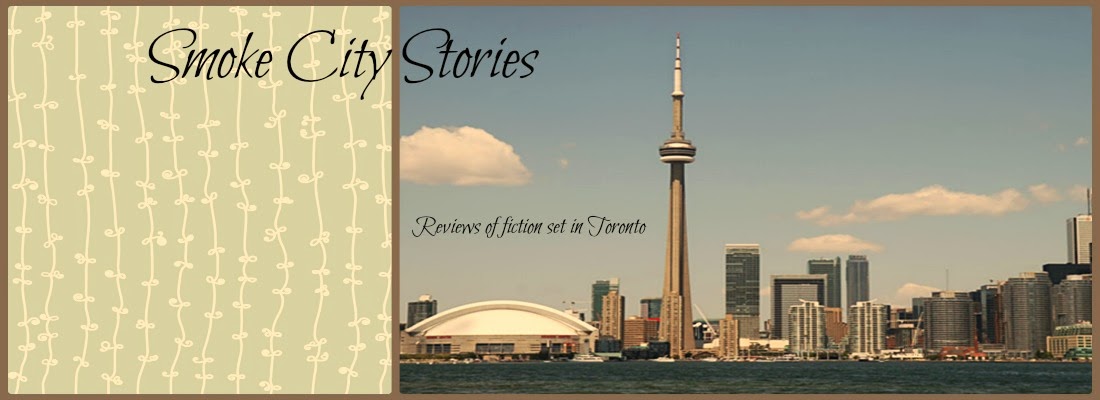 I know that a lot of my reviews have been very positive so far, and you're probably starting to think I'm one of those critics who just likes everything. Well, that is not true - especially about books. Ask any of my friends who have ever heard me talk about the Celestine Prophecy, and you will know what I think of bad writing. I also find that some books are quite well written and very good, but they're just not my thing (see Fables of Brunswick Avenue). But I think I've just been lucky so far with the books I've picked for this blog.
I know that a lot of my reviews have been very positive so far, and you're probably starting to think I'm one of those critics who just likes everything. Well, that is not true - especially about books. Ask any of my friends who have ever heard me talk about the Celestine Prophecy, and you will know what I think of bad writing. I also find that some books are quite well written and very good, but they're just not my thing (see Fables of Brunswick Avenue). But I think I've just been lucky so far with the books I've picked for this blog.
I am saying all this because I want you to know that when I tell you Consolation is among the top three most beautifully written books I've ever read, you need to know that it actually means something. I do know good writing when I come across it, and this book is pure poetry. (For the curious, the other two books in my top three would be A Fine Balance by Rohinton Mistry and No Great Mischief by Alistair MacLeod - ha! All three are Canadian).
Consolation deals with two stories: the first is the story of Jem Hallam, a chemist living in Toronto in the 1850s, and the story wrapped around it is of John Lewis, a young man in present-day Toronto, struggling with the death - and legacy - of his father-in-law, who committed suicide while suffering from ALS and believing that the construction site of a new arena was sitting on historically groundbreaking photographs of early Toronto.
This book is primarily about loss, about the past and how we relate to it, and about family. John is a man without a family, preparing to marry into one with a lot of baggage. As someone who is about to get married - and has been navigating the relating-to-a-long-term-love-interest's-family waters for nine years now - I related so much to both John and his fiancee, Bridget, as they both struggled to figure out John's place. In fact, there was a lot going on in John's life that struck a chord with me: the low-paying, labour-of-love job he picks up and how it contrasts with Bridget's career as a lawyer; the feeling of wandering through his twenties with the vague suspicion that adulthood should be here by now; the longing for acceptance and validation (a universal theme, for sure).
Hallam's story mirrors John's in his almost unconscious search for a family, and his unwillingness to let go of what he has lost. His Toronto is an unfriendly place, in climate and society. It was fascinating to read about the early days of the city, the makeup of a place consisting of so many people who had left their families behind in England. A city of lonely souls.
The whole book is gorgeously written, but there are some particularly beautiful scenes that I adored. The scene between Marianne and David (John's future in-laws) in the shower is probably the most compelling and emotional sex scene I have ever read. I cried and cried (on the streetcar!). There are a few conversations between John and his future mother-in-law that broke my heart; Redhill is clearly a writer who knows what it means to lose someone. His writing is bold in dealing with the uglier feelings that come with death - the who-loved-him-more, who-knew-him-better competitions that lurk beneath each conversation. Suicide always adds an extra layer to grief; whoever feels they had the greater claim to the deceased's love is inevitably burdened with the guilt of not intervening. We know it's not our fault but that's how it goes.
Toronto plays an interesting role in the book; the Toronto of the past is impatient to grow and thinks itself too young to merit keeping anything for historical interest, while present-day Toronto is also a place of progress-worship with no time to look for the past. Streets are mentioned, and landmarks, but it is definitely more about the feel of the city. Through the character of David, the author pleads with us to consider the past, to think about what life was really like and the people who have gone before. "The past really happened," he says to his daughter. It has to have, because what else would we leave behind?
I can't recommend this book highly enough. I adored it. Please read it if you ever have the chance; if you live in Toronto, there are 275 copies at the library. You've got no excuse.
Five CN Towers out of five.







